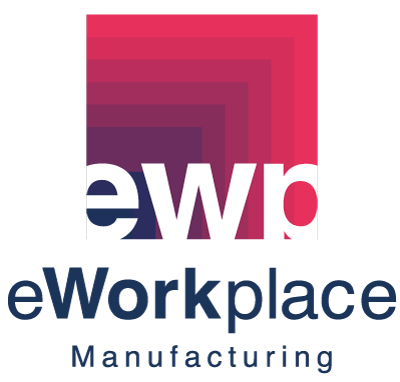Open Source software is free, right? We can save a fortune using it, can’t we?
Well, that depends…..
The attraction of Open Source software is not just that the initial license is free, but you also avoid on-going annual maintenance fees of around 20-25%. That’s a powerful incentive, but you need to consider the TCO (Total Cost of Ownership) of the software you use, and what you are using it for.
Open Source software, like any other software, comes in many flavors and each has a particular use. Three broad categories I want to address here are Operating Systems, Applications, and Development Tools.
Open Source operating systems are very much considered “main-stream” now as an alternative to Microsoft Windows© and Microsoft Server. There is a reason Microsoft has been so dominant in this area. While some of the big Vendors (like IBM, HP, and SAP) are investing heavily in Open Source, none have achieved the level of System Management that Microsoft offers. While there is a lot of work going on this area, it comes at a cost. All that investment has to be recovered, and that means the Appliance / Hardware cost is higher. Compatibility of your existing hardware / IT infrastructure becomes an issue – replacement to meet the needs of your Open Source environment may impact your TCO greatly.
Security within your system, and the applications running on it, becomes an issue. To achieve the desired level of security, you may have to purchase other advanced applications to make it happen.
When measuring your TCO for an Open Source system, you need, therefore, to seriously consider those hardware and security costs.
Moving to such an environment will also probably mean a change of application software, and that will incur similar costs to any new ERP implementation: IT costs to maintain and secure the system; transferring your historical data; configuring and testing the new application(s); training staff; etc. Gartner have suggested that the savings in TCO for a new Open Source environment may be as low as 3%.
Having said that, Linux is probably the preferred environment for running SAP HANA, and SAP has done a good job of ensuring the issues are addressed in this environment.
Some Open Source applications are now commonplace. A classic example is WordPress, widely used for Blogs such as this one.
These applications have their own, different, set of challenges. If you have a problem with a commercial application, you call up the publisher and get them to help you resolve it. With Open Source applications, the support comes from a “community” of users. While there is a good chance you will get your issue resolved, the members of that community will only see your issue when they bother to login and see it, and of course they do not have the pressure of reputation to resolve your issue quickly. Usually, you need to search through the various forums to see if you can find the issue listed. This can be extremely time-consuming, there are literally thousands of posts covering many years. In trying the various solutions suggested, remember that many of the posters may know less about the application than you do, and they may not fully understand your issue. The more widely-used the application, the greater your chances of success.
This kind of cost is on-going throughout the life of the application.
Open Source development tools are a whole different kettle of fish. In fact, it is very much like being given a “free to a good home” fish aquarium.

It sounds like a good idea, you have always wanted to have fish in your home or office. When you get it home, you find that the bulbs in the lighting system have either blown or degraded too much to use. The filter works fine, but you need to replace the filter pads, and that is an on-going maintenance requirement. You find you need an extra source of oxygen flowing through the water. All this is before you even stock the aquarium: you need sand for the bottom; “furniture” – pipes and wood for different varieties to hide in or nibble on; plants; and of course some fish!
Development tools are just that – a blank canvas to work with. You need to employ or contract programming tools, you need to design the application, build it, test it, and roll it out. If your development tools are Open Source, you have the same issues of problem-resolution – you are relying on a community of users to help you, none of whom have a vested interest in your project.
The “build or buy” discussion is the same whether you are using Open Source or Commercial development tools. Ultimately, the cost of developing using Open Source tools may be considerably more than using Commercial tools once all the hidden costs are taken into account.
Amongst the “hidden costs” are some other things to be aware. Commercial tools have many users and will stay strong as long as the publisher survives. Open Source may disappear overnight, or they may change completely as new approaches are adopted. In order to stay viable, some Open Source offerings may drop features you are relying on for your development. And the Open Source tools you choose may ultimately prove to be the wrong ones for what you are trying to achieve.
Lastly, if you decide that the best way to recover your costs is to make your application saleable to other organizations, there are two things you need to keep in mind. The Open Source licenses have to be purchased if you include them in a commercial application, and the additional cost of taking an application from a single-use scenario to a commercial is exponential.
Summary:
Open Source operating systems may be a good option, if they suit what you want to run on them. Many Open Source applications like WordPress are in wide use, and are viable options for specific options. Developing your own solutions will probably never be the cost saving you imagine it will be when you start out.
If Open Source appeals, be specific about why, and what. If the reason is up-front cost-savings, Cloud Computing may be a far better option for you.
“Read our Blog: Have you considered the advantages of cloud ERP”
Download our product brochure to see how OptiProERPs- an end-to-end manufacturing ERP combines financial management, supply chain, CRM, and industry-specific solutions in one seamless system and gives you the foundation to scale and compete in todays digital world.
Follow Us








